20 years ago: In His Shoes Formation
It was 20 years ago today: Untold stories of the Youth Ministries Center
Today’s Episode: In His Shoes
Thankfully April 24 only comes around once a year. It’s a super-charged day of Armenianness. It is the anniversary of the Armenian Genocide which began with a round-up of intellectuals and leaders of the community on April 24, 1915. It was the beginning of a systematic program of annihilation of the Armenian population living in the Ottoman Empire. By the time it was over, 1.5 million Armenians were murdered – men, women, and children – and about the same number were exiled from their historic homeland creating the Diaspora, with Armenians in all corners of the world and in every country.
The Genocide is a very personal story with me because all four of my grandparents were Genocide survivors. All four of my wife’s grandparents were Genocide survivors. We grew up with the stories of atrocities that were so horrendous that they often told with silence and tears.
As far as I can remember, on every April 24 we would attend a commemoration activity of the Armenian Martyrs. In 1965, on the 50th anniversary of the Genocide, a small group of men got together with the vision of creating a monument to honor the Martyrs. My father was one of those men. As a little boy I remember him going to meetings, the events, fundraisers, and finally the opening of the monument, the first one on public property in Montebello, California. It was a small but meaningful way in which we honored the memory of those who perished. A few years ago they placed a plaque on the monument with the name of the committee members. Seeing my father’s name there swelled pride in me, and reminded me of commemorations from years past and what they have deteriorated to today.
Fifty, Sixty, Seventy, and even eighty years after the Genocide we would have survivors at these events who would share their eye-witness account of the mayhem their experienced in their homes, during the most tender years of their lives. Today, these events are filled with a demand for justice (from Turkey) and rhetoric that often is forgotten on April 25. I’ve always maintained that the easiest day to be Armenian is April 24, and the hardest day is April 25 and the 364 that follow.
At the Youth Ministry Center, kids were coming in because of the sign out front. They knew it was a place where both their Armenian ethnic identity and their Christian faith would be nurtured and grow. I wanted the reality of the Easter experience – Christ has risen – to resonate in their experience as Armenians whose ancestors, now three or four generations ago, had experienced Genocide.
We organized an overnight retreat in Santa Clarita, California. I asked my friends Linda Maxwell and Jose Quintanar to help me facilitate the discussions. As always, they lovingly obliged.
This group of 20 young people, ages 14-18, contemplated the meaning of being the grandchildren (the term was use generically to denote either great or great-great grandchild) of Genocide survivors in the middle of America today with all the amenities and comforts they enjoy.
There was really only one choice at the time if you didn’t want to stay home on April 24, you would attend a march, usually kicked off with a group of clergy reciting a prayer, then they’d pass out banners and posters “demanding” justice for crimes committed against your ancestors and you’d march through the streets of Hollywood to the Turkish Embassy. Once, there, you’d participate in a rally with loud speeches demanding justice from the Turks. No one was sure if the there was anyone listening or if anyone was even in the Embassy building. On top of it all, the math didn’t figure either. The number of Armenians in the entire world was less than the number of people on Los Angeles freeways on any given day of the week. In other words, we lacked critical mass.
The students of the Youth Ministry deliberated and discussed. They prayed and discussed some more. At the end a reading from Scripture opened their minds and their path. From Matthew 25, Jesus says, “For I was hungry and you gave me something to eat, I was thirsty and you gave me something to drink, I was a stranger and you invited me in, I needed clothes and you clothed me, I was sick and you looked after me, I was in prison and you came to visit me…. When you did it to the least of my brothers and sisters, you did it for me.”
They came up with a very simple and clear definition of Armenian-Christian identity for children of the new millennium: To be an Armenian means you learn and grow from your history, and feel the pain of others who suffer the same fate. Remembering the past makes sense in defining your present. And so, this small group of young Armenian-Americans, distanced from the Genocide by almost a century, came up with a simple formula: Walk in the shoes of others. Because we have suffered, we have an obligation to help others who suffer. Our Christian imperative to love and help others is accented by our Armenian history.
And so the In His Shoes mission was born of the Youth Ministries Center. Through the years, they have organized rallies for justice in Darfur, collected funds – $500,000+ to aid the hungry in Africa, delivered a forgiveness conference in greater Los Angeles, and met with Gov. Schwarzenegger and were part of an effort that divested California and the UC Regents from the Sudan to the tune of $6Billion, just to name the larger products.
Now, if you’re thinking miracles only happen with thunder bolts and lightning, consider how much greater the flash is with this. Consider these are the grand children of a generation that they tried to annihilate, these were people that were not supposed to be here, but they’re here, living, thriving and providing for others. Christ has risen! And so have we!
We continue tomorrow with more untold stories from 20 years ago today, and invite you to join us. If you missed earlier episodes, you can hear them on your favorite podcatcher or at Epostle.net under the “Armodoxy for Today” tab. Remember to leave a comment and/or write us at feedback@epostle.net.
Cover: First logo of In His Shoes, created by Varoujan Movsesian, 2003

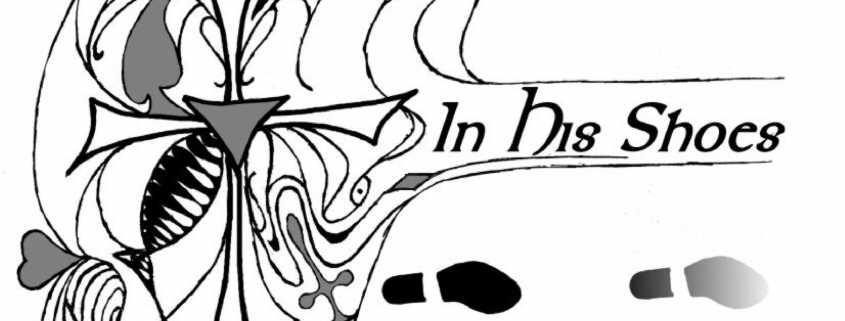
 2014 Fr. Vazken
2014 Fr. Vazken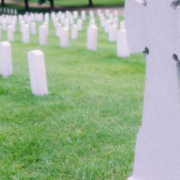
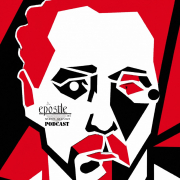
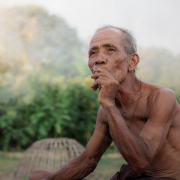
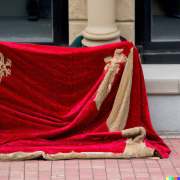





Leave a Reply
Want to join the discussion?Feel free to contribute!